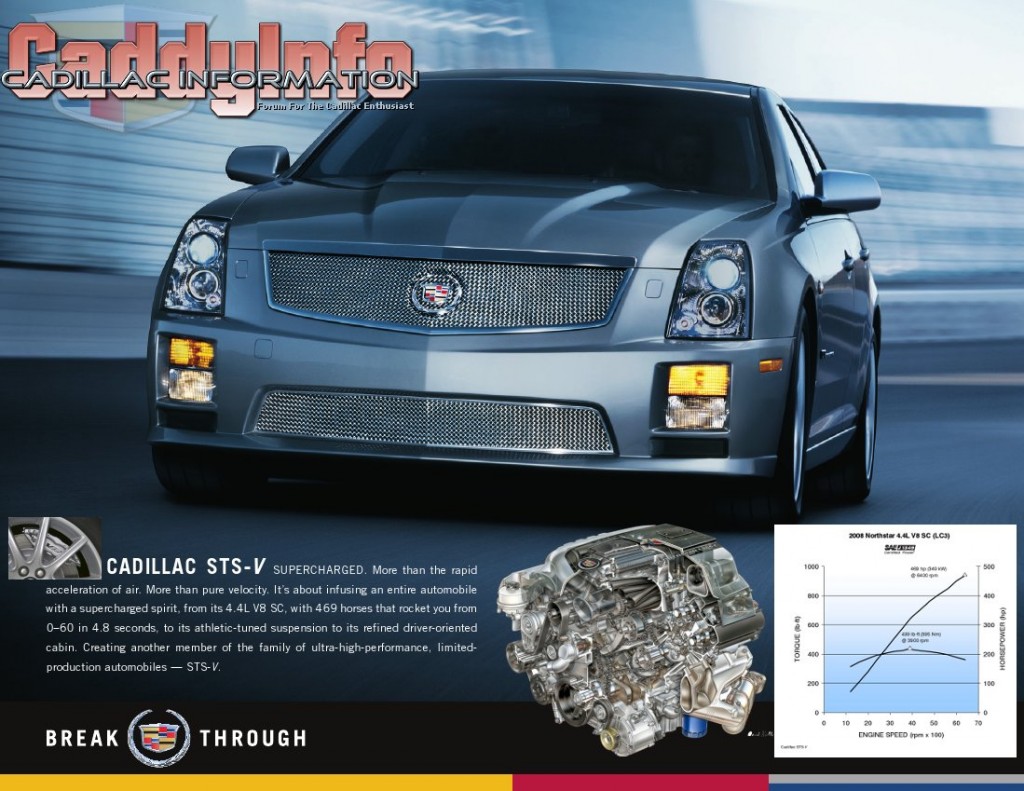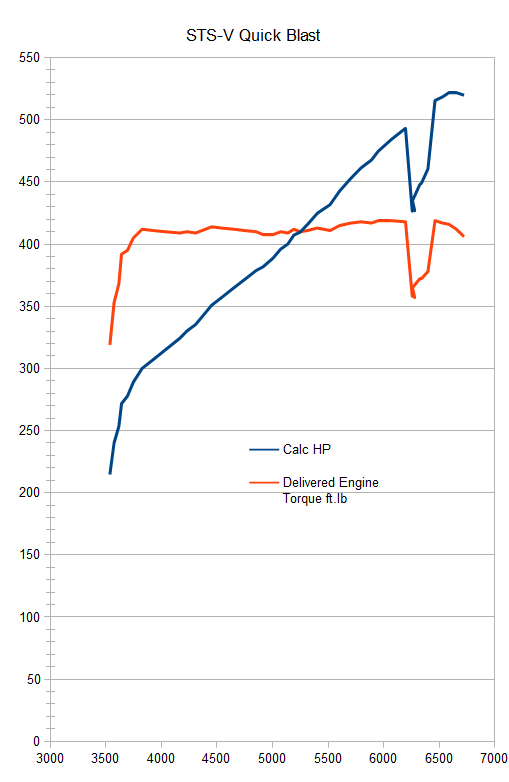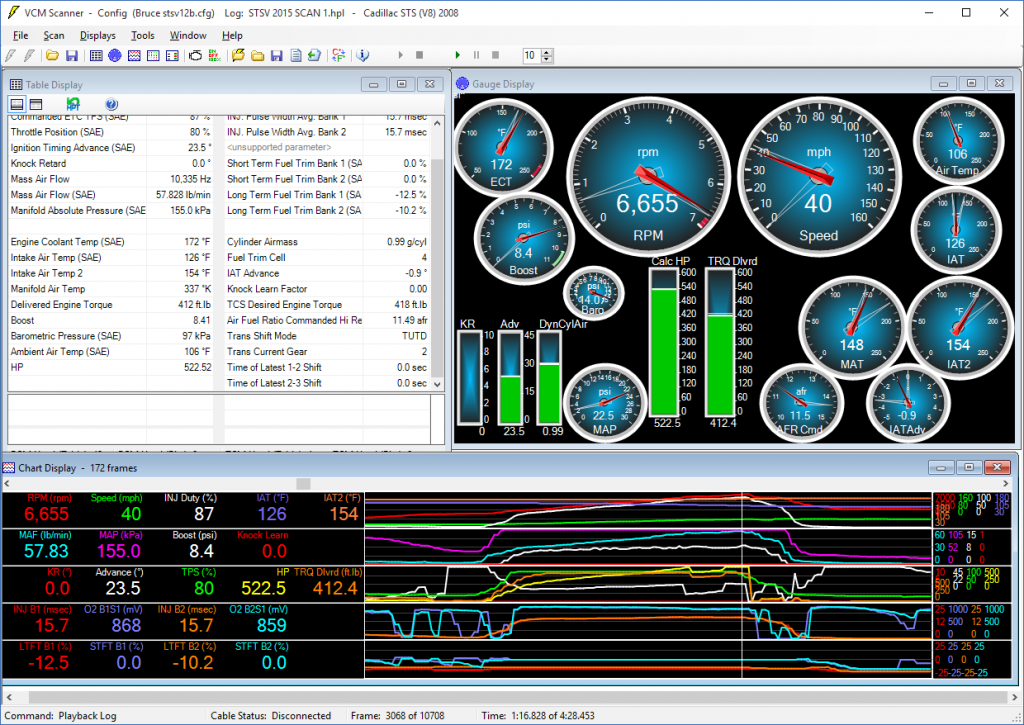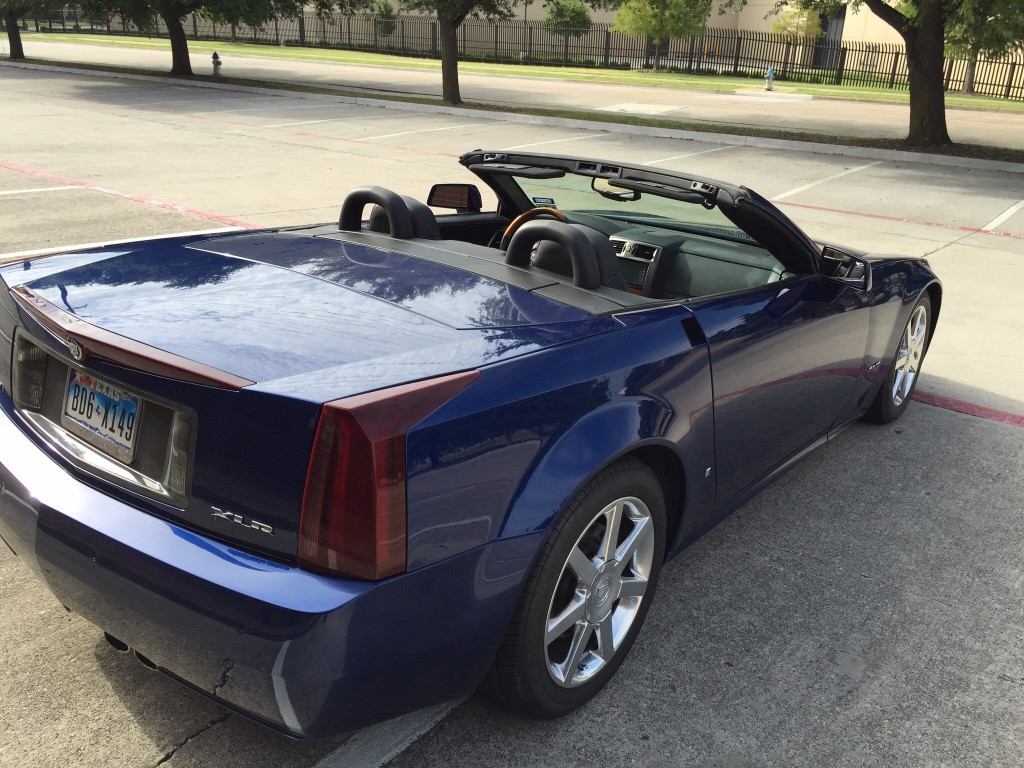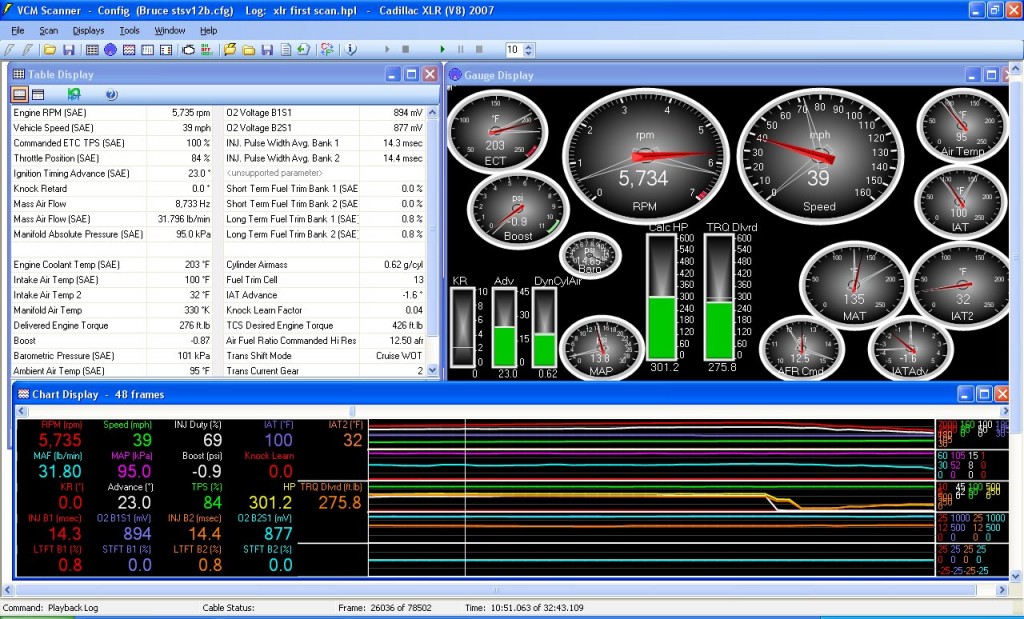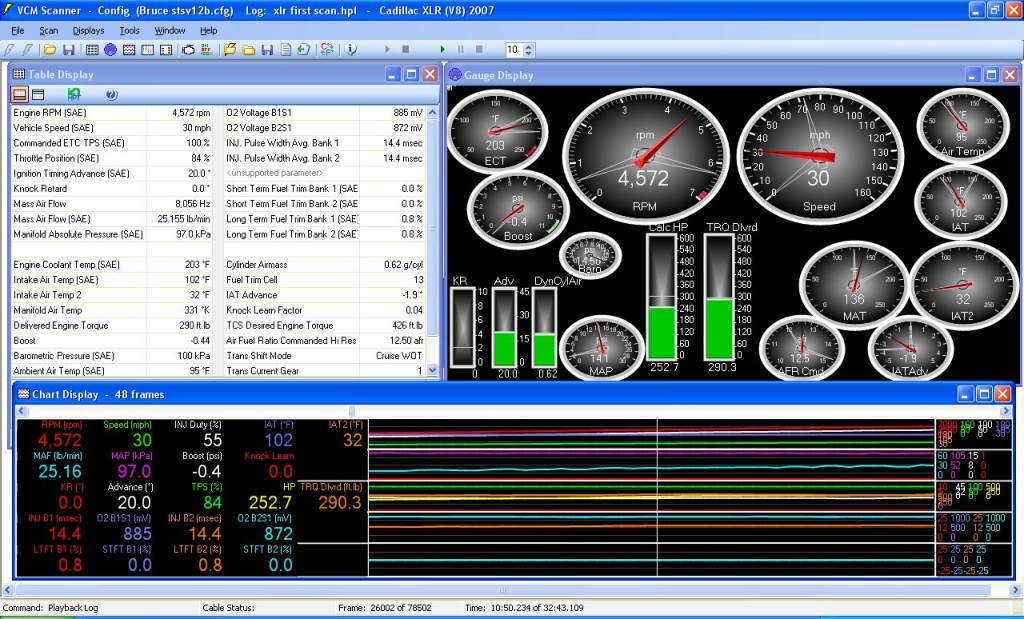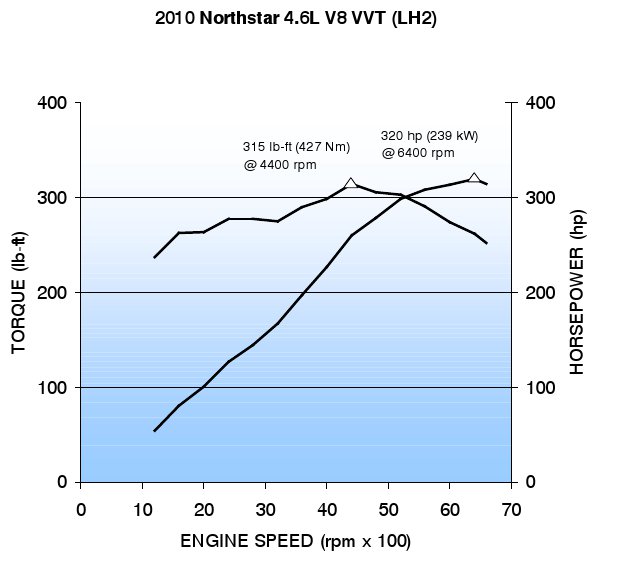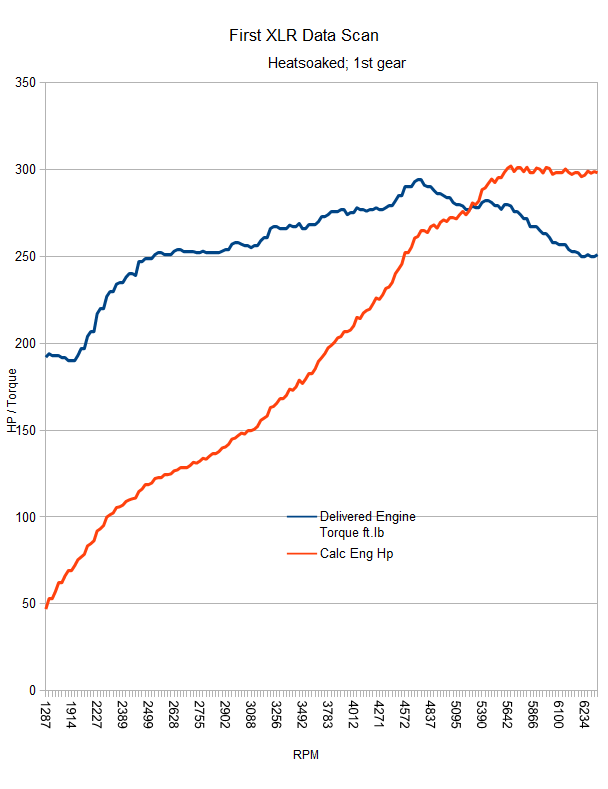I have been quoting delivered HP values in recent articles, and these are quick and easy to ref. This is a PCM calculated value that converts air flow to torque using air/fuel ratio and spark advance.
In an article here http://caddyinfo.com/wordpress/wheel-hp-calcualted-hp-and-you/ I showed a comparison of calculated hp for my STS-V vs Virtual Dyno results.
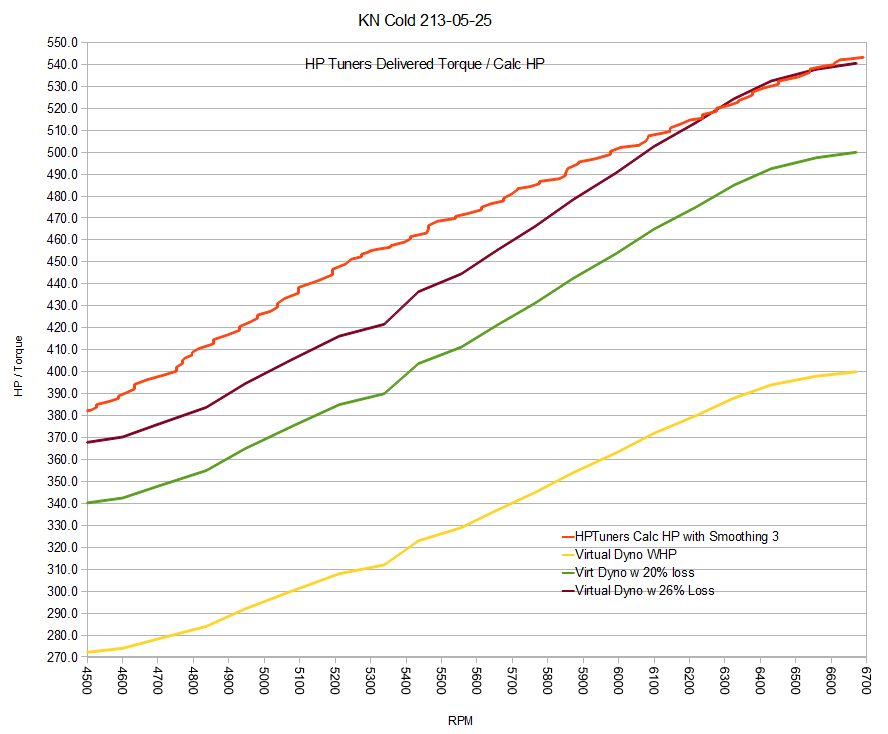
In that analysis I found there were 26% losses from calc hp to virtual dyno. My current theory is that delivered hp does not account for supercharger losses, or the hp to turn the supercharger. Further, With est transmission losses at 20%, that analysis shows supercharger turning loss to be ~6%, or as accurately can be modelled as 40 hp. [also possible it does include sc turning losses, and delta is greater losses due to 1 or 2nd gear not 1:1]
I continue to find Calc HP to be useful and quick to reference, for comparison a 6% loss must be considered as well – so a comparable engine dyno after S/C pumping loss would be 6% less. If the calc hp was 522, adjusted for conditions = 556, after s/c 522 crank hp, dyno-equivalent after 20% trans loss would be .8 x 522 = 417 wheel hp or whp. I think that is the factor I was missing previously, and will save some analysis somersaults. While delivered torque gets a lot of poor press on the web, the shape of the curve and values do validate against the virtual dyno analysis of the same data and the dynojet tests I have done.
What do you think?

